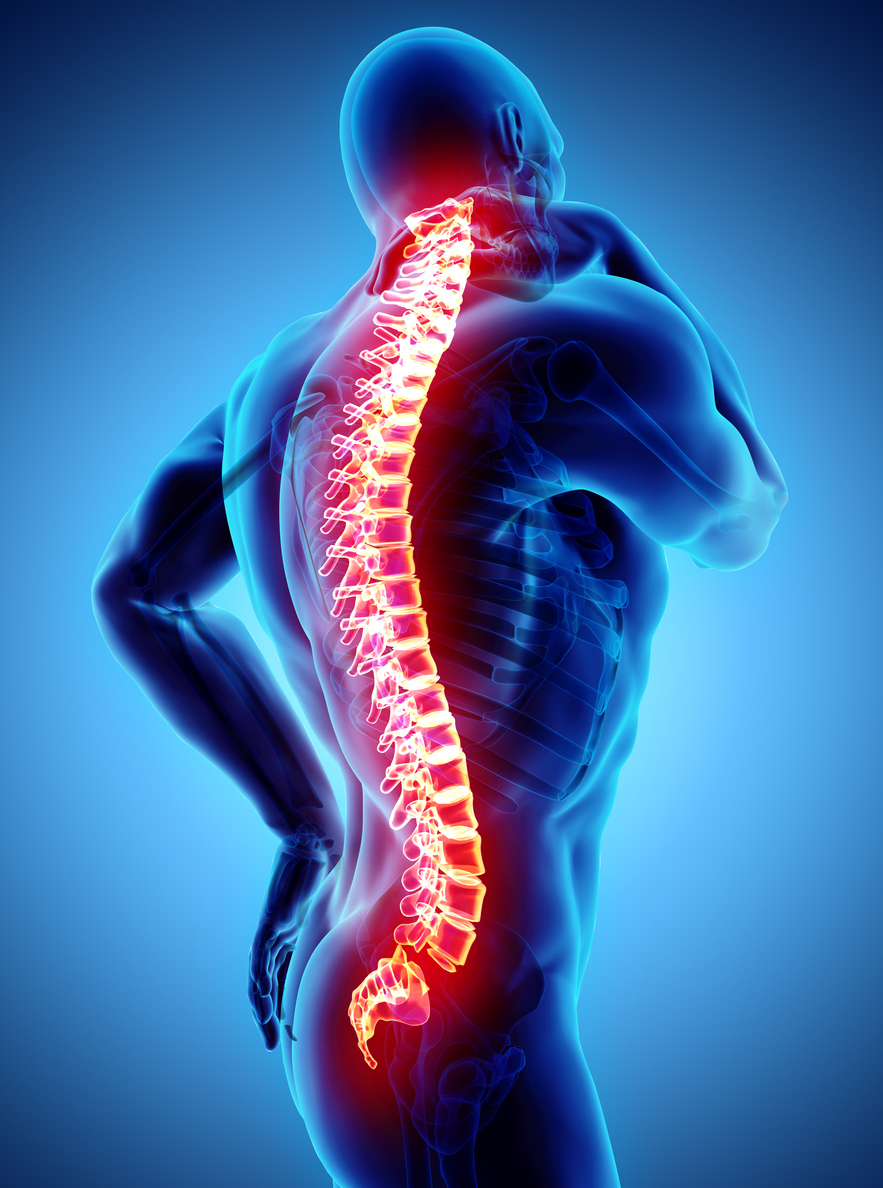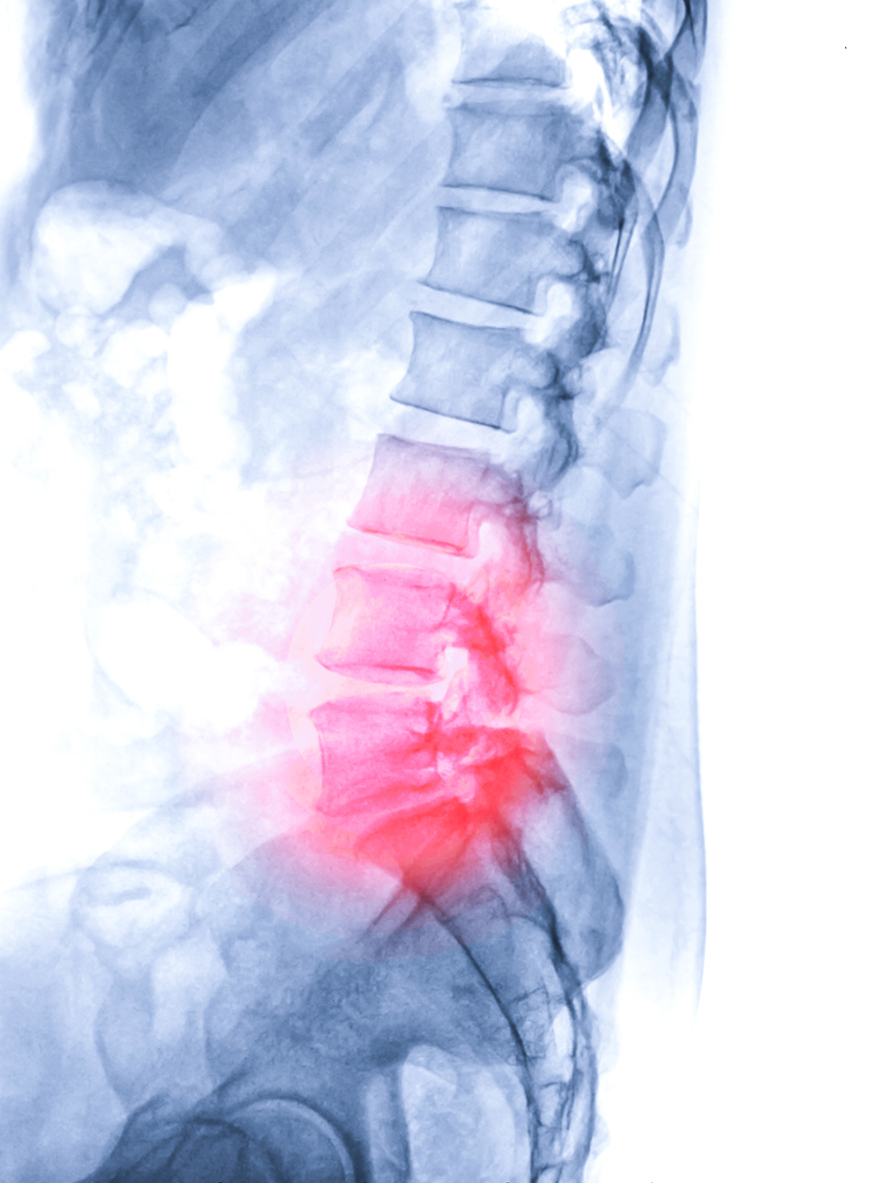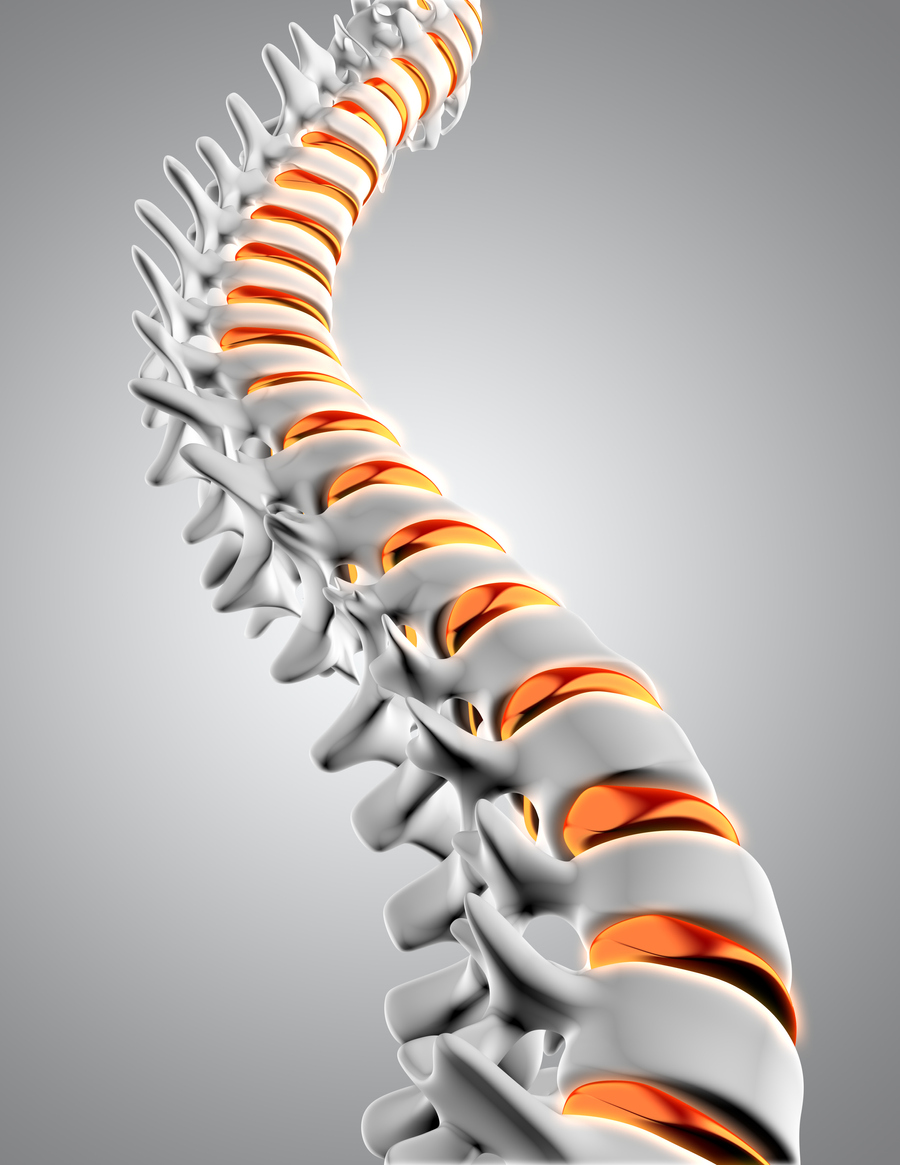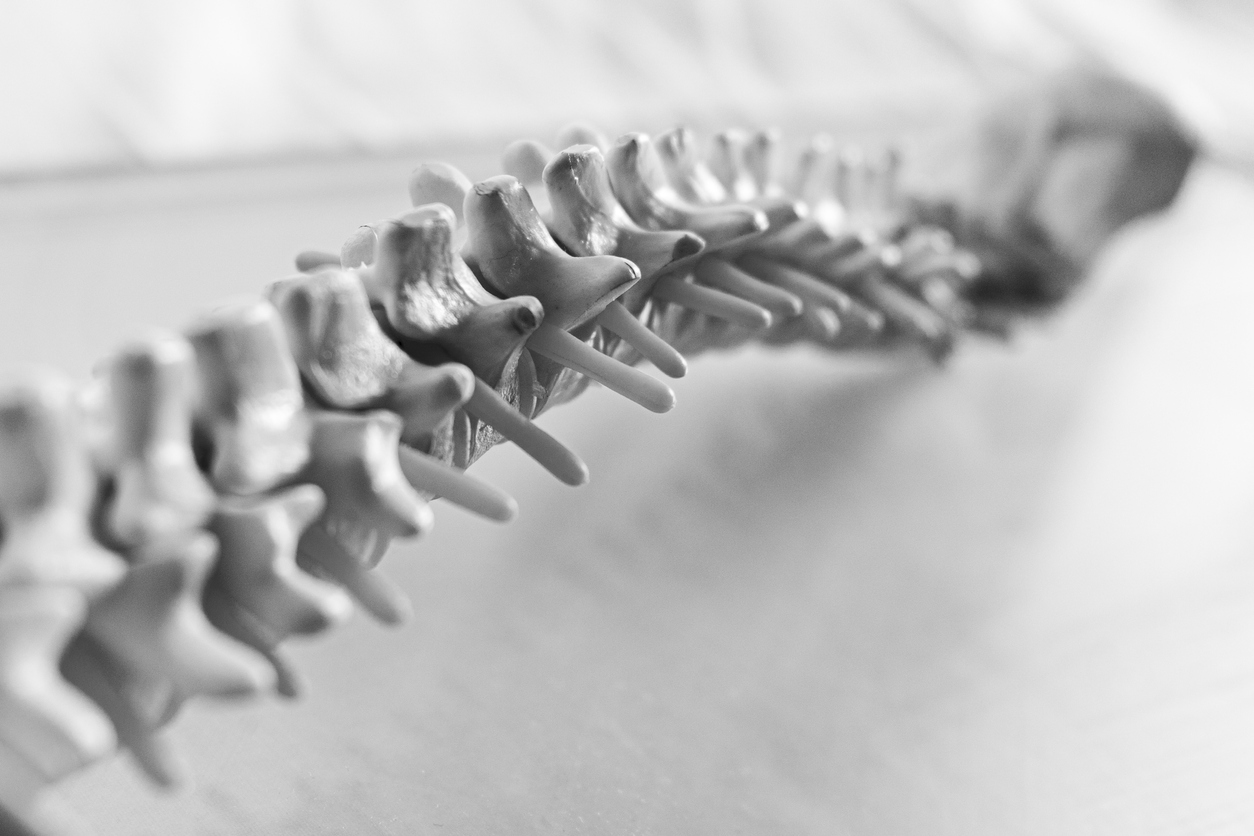
SPINAL STENOSIS
Spinal stenosis is a condition that occurs when the spaces within the spinal column narrow, putting pressure on the spinal cord and/or nerve roots. This narrowing can be caused by a variety of factors, including aging, injury, or the development of bone spurs.
Spinal stenosis can occur in any part of the spine, but it is most common in the lower back (lumbar spinal stenosis) and the neck (cervical spinal stenosis). When the spinal cord or nerve roots are compressed, it can cause a variety of symptoms, including pain, numbness, and weakness in the affected areas.


How is Spinal Stenosis Diagnosed?
The diagnosis of spinal stenosis typically begins with a medical history and physical examination. During the physical exam, a healthcare professional may check for signs of nerve compression, such as weakness or numbness in the arms or legs.
In addition to the physical exam, diagnostic imaging tests are often used to confirm the diagnosis of spinal stenosis. These may include:
- X-rays: X-rays can show changes in the bones of the spine, such as bone spurs or narrowing of the spinal canal.
- MRI (Magnetic Resonance Imaging): This imaging test can show detailed images of the soft tissues in the spine, including the spinal cord, nerve roots, and discs.
- CT (Computed Tomography) Scan: This imaging test provides detailed cross-sectional images of the spine.
- Myelography: In some cases, a contrast dye may be injected into the spinal fluid to help highlight areas of compression on a CT scan or X-ray.
Once the diagnosis of spinal stenosis is confirmed, the healthcare professional will work with the patient to develop a treatment plan based on the severity of symptoms and the underlying cause of the condition. Treatment options may include physical therapy, pain medication, lifestyle modifications, or surgery in some cases.
Symptoms Of Spinal Stenosis
The symptoms of spinal stenosis can vary depending on the location and severity of the narrowing in the spine. Common symptoms include:
- Pain: Spinal stenosis can cause pain in the neck, back, arms, or legs. The pain may be sharp, shooting, or burning, and it may worsen with movement or certain positions.
- Numbness or tingling: Spinal stenosis can cause numbness, tingling, or a pins-and-needles sensation in the affected area. This may occur in the neck, back, arms, or legs.
- Weakness: If the spinal cord or nerves are compressed, it can cause weakness or a loss of muscle control in the affected area. This may make it difficult to perform certain tasks or activities.
- Loss of balance: Spinal stenosis can cause a loss of coordination and balance, which may lead to falls or other accidents.
- Bowel or bladder dysfunction: In rare cases, severe spinal stenosis can compress the nerves that control bladder and bowel function, causing incontinence or other bladder or bowel problems.
It’s important to note that not all cases of spinal stenosis cause symptoms, and the severity of symptoms can vary widely. If you are experiencing any of these symptoms, it’s important to seek medical attention to determine the cause and develop a treatment plan.


What Happens If Spinal Stenosis Is Left Untreated?
If spinal stenosis is left untreated, it can lead to a range of complications and potentially serious consequences. The severity of these consequences can depend on the location and severity of the spinal stenosis.
Some potential complications of untreated spinal stenosis include:
- Chronic pain: Spinal stenosis can cause ongoing pain and discomfort that can be difficult to manage without treatment. Over time, this pain can have a significant impact on a person’s quality of life.
- Nerve damage: Compression of the nerves in the spine can cause nerve damage, which can lead to weakness, numbness, and other neurological symptoms. In some cases, this damage may be permanent.
- Loss of mobility: Severe spinal stenosis can limit a person’s ability to move, walk, or perform other daily activities. Over time, this loss of mobility can lead to a decline in overall health and an increased risk of falls and other accidents.
- Loss of bowel or bladder control: In rare cases, severe spinal stenosis can compress the nerves that control bowel or bladder function, leading to incontinence or other bowel or bladder problems.
- Paralysis: In the most severe cases, spinal stenosis can compress the spinal cord, leading to paralysis or other serious neurological deficits.
Overall, it’s important to seek medical attention if you are experiencing symptoms of spinal stenosis to prevent the condition from worsening and to develop an appropriate treatment plan to manage your symptoms and prevent complications.
This information is intended for general use and is not meant to replace consultation with a physician. Please, if you are experiencing pain or unusual symptoms, contact your provider. Also, if you are experiencing a medical emergency please call 911.
What Is enVision Spine Surgery With Dr. Shen?
Envision Spine Surgery is the surgical technique Dr. Shen has pioneered. With endoscopic spine surgery, Dr. Shen makes a small skin incision of less than a half-inch and inserts an endoscope – a small tube approximately the size of a #2 pencil – through the incision by gently pushing muscles to the side. The tube houses a light source, an irrigation channel, a working channel for micro instrumentation, and a high-definition camera. The camera is connected to a monitor that Dr. Shen uses to view your spine without harming the muscles or ligaments.


What Is The Difference In Minimally Invasive Spine Surgery Or Endoscopic Spine Surgery For Spinal Stenosis?
Traditional open spine surgery would require a six-inch or longer incision with a retractor used to displace the muscles around the injured disc. Bone and ligaments would have to be cut away to expose the nerves and the nerve root would be pulled away. The injured disc would then be removed to decompress the nerve.
With traditional minimally invasive surgery, the incision is smaller. Additionally, muscle displacement is much less than with open surgery but some damage is unavoidable.
Because endoscopic spine surgery is the least invasive procedure, there is little to no damage to skin, muscle, ligaments, and bone so there is less post-op pain. Since general anesthesia isn’t necessary, there are fewer medical risks, and many endoscopic spine procedures can be performed on an outpatient basis.
How Long Does It Take To Recover From Spinal Stenosis Treatment With The enVision Spine Surgery Method With Dr. Shen?
Recovery from ANY surgery varies from patient to patient. However, Minimally Invasive Endoscopic Spine Surgery like Dr. Shen has pioneered is the LEAST invasive spine surgery any patient could have. Therefore, recovery time is often quicker than traditional spine surgery.

Frequently Asked Questions About Spinal Stenosis
Can Spinal Stenosis Be Prevented?
While it’s not always possible to prevent spinal stenosis, there are steps you can take to reduce your risk of developing the condition or to slow its progression. Some tips for preventing spinal stenosis include:
- Exercise regularly: Regular exercise can help improve strength, flexibility, and mobility, which can help reduce the risk of spinal stenosis. Low-impact activities like walking, swimming, or yoga can be especially beneficial.
- Maintain a healthy weight: Excess weight can put added stress on the spine, which can increase the risk of spinal stenosis. Maintaining a healthy weight can help reduce this risk.
- Practice good posture: Poor posture can place added stress on the spine, which can increase the risk of spinal stenosis. Maintaining good posture can help reduce this risk.
- Avoid smoking: Smoking can reduce blood flow to the spine, which can increase the risk of spinal stenosis. Quitting smoking can help reduce this risk.
- Take breaks during prolonged sitting: If your job or daily routine involves prolonged sitting, make sure to take frequent breaks to stand, stretch, and move around. This can help reduce the risk of spinal stenosis.
While these steps may help reduce the risk of spinal stenosis, it’s important to note that some cases of spinal stenosis are caused by genetic factors or other underlying health conditions that may be beyond a person’s control. If you are experiencing symptoms of spinal stenosis, it’s important to seek medical attention to determine the underlying cause and develop an appropriate treatment plan.
Can Spinal Stenosis Be Cured?
Spinal stenosis is typically a chronic condition, and there is no known cure for the condition. However, many treatment options are available that can help manage symptoms and improve quality of life.
The treatment options for spinal stenosis depend on the severity of the condition and the location of the stenosis. In many cases, non-surgical treatments such as physical therapy, pain medication, and lifestyle modifications can help manage symptoms and improve function. In some cases, surgery may be necessary to alleviate symptoms and prevent further damage.
It’s important to note that while treatment may help manage symptoms and prevent complications, it’s not always possible to completely reverse the effects of spinal stenosis. However, with the right treatment plan, many people with spinal stenosis are able to maintain an active and healthy lifestyle despite their condition.
If you are experiencing symptoms of spinal stenosis, it’s important to speak with a healthcare professional to determine the underlying cause and develop an appropriate treatment plan.
Can I Still Exercise With Spinal Stenosis?
In many cases, regular exercise can be a beneficial part of the treatment plan for spinal stenosis. Exercise can help improve strength, flexibility, and mobility, which can help manage symptoms and improve overall function.
However, it’s important to work with a healthcare professional to develop an appropriate exercise plan that is safe and effective for your individual needs. Depending on the location and severity of the stenosis, some types of exercise may be more beneficial than others.
Low-impact activities like walking, swimming, and cycling are often recommended for people with spinal stenosis, as they are less likely to place added stress on the spine. Strengthening exercises that target the core, back, and leg muscles may also be beneficial for improving stability and reducing symptoms.
It’s important to start slowly and gradually increase the intensity and duration of exercise over time. If you experience pain or discomfort during exercise, it’s important to stop and speak with a healthcare professional to determine the underlying cause and adjust your exercise plan as needed.
Overall, exercise can be a beneficial part of the treatment plan for spinal stenosis, but it’s important to work with a healthcare professional to develop an appropriate plan that is safe and effective for your individual needs.
Ready To Take The First Step Towards A Pain-Free Life?
At Shen-Spine, we understand that dealing with chronic back or neck pain can be frustrating, debilitating, and affect your quality of life. That’s why we are here to help you get back to doing the things you love. Dr. Jian Shen is an experienced spine surgeon and offers a range of cutting-edge treatments and procedures to alleviate pain and improve mobility. Whether you suffer from spinal stenosis, herniated discs, or other spine conditions, Dr. Jian Shen has the expertise to provide you with personalized care and treatment options.
If you’re ready to take the first step towards a pain-free life, we encourage you to contact us today. Our friendly and knowledgeable staff is standing by to answer your questions and schedule a consultation with Dr. Jian Shen. Don’t let back or neck pain control your life any longer – let Shen-Spine help you get back to doing the things you love.
